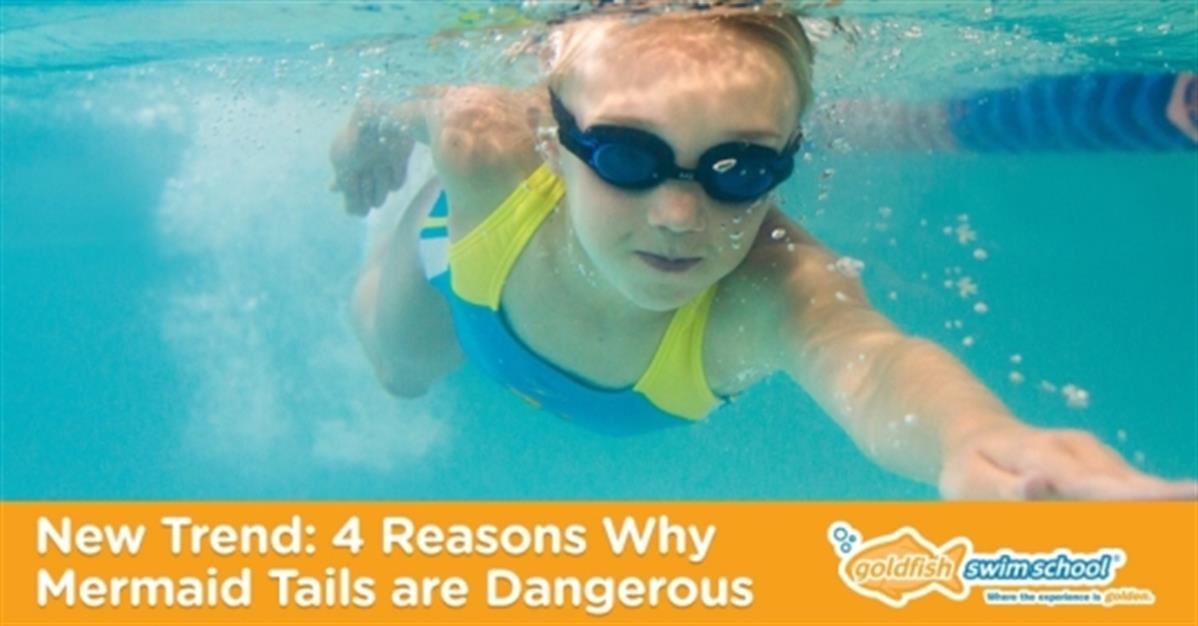New Trend: 3 Things You Should Know Before Using Mermaid Tails

If youre thinking about getting your child one of the popular new
mermaid tails popping up all over, you need to understand the potential
safety risks involved. The mermaid tails are cute for little ones and
your child can always pretend to be a mermaid on dry land or perhaps by
dipping the fin in a few inches of water in a small kiddie pool.
However, if your child wants to use the toy for swimming, we think it should
only be used with careful and close adult supervision.
We know your little swimmer may be begging for a mermaid tail and we cant
say we blame them they look fun! Before you purchase one
and definitely before you let your child take it for a swim read
our safety tips so everyone enjoys this new toy, safely.
1. Feet are bound together
Swimming involves using the entire body including arms, legs and
feet to move around and stay safe in the water. But with the mermaid
tail toys, legs and feet are essentially bound together in a manner not
conducive to swimming naturally.
As a result, a swimmer must use both legs together in one movement instead
of the typical alternating-leg kicking pattern. For young and inexperienced
swimmers, this poses a safety because its not what has been learned
and not what the body instinctively wants to do.
Be sure to keep an eye on your little one even if he or she is
an advanced swimmer while he or she is swimming with the mermaid tail.
2. Heed safety instructions
Some of the mermaid tail toys on the market are made in such a manner that
a portion of it can actually fill up with and hold onto water. The mermaid
tail can fill up with water, which can become heavy and limit movement
and hold the swimmer down.
If this happens, it can easily go unnoticed that a swimmer is in distress
because, unlike in the movies, a person who is drowning doesnt
display a big, splashy commotion. So, pay particular attention to the
safety instructions detailed with the mermaid tail.
And, as always, everyone should be able to recognize the signs of drowning
and know what to do in such a situation.
3.Stick to the pool
Because of the potential safety risks involved with a young swimmer using
a mermaid tail, its better to stay in the pool where its
much easier to see whats going on under the water. At the beach
or in a lake, its more difficult for a swimmer (and you) to notice
where there are drop-offs, obstacles or even a current that could hinder
movement while wearing a mermaid tail.
With a mermaid tail on, it may become harder for a swimmer to get to a
safe standing position or swim to a safe area. In a potential emergency,
that means a child may be in distress whether accidentally dipping
underwater or getting inadvertently flipped upside down and not
be able to remedy the situation effectively.
Mermaid tail or not, it is always a good idea to stay close to your little
fish when swimming, whether in the pool or open water.
Learn water safety at Goldfish Swim School
At Goldfish Swim School, our instructors use integrity, compassion and
trust to teach kids as 4 months old and older how to swim, and how to
be safe in the water because we want you to have a GOLDEN experience
every time.
Find a location near you to sign up today and celebrate when you start seeing those extraordinary
results! (Did we mention our WOW! Customer service is part of what makes
Goldfish Swim School worth it?)

